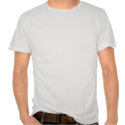The NIST team tested the optical properties of the nanostars using two target molecules, 2-mercaptopyridine and crystal violet. These molecules were selected because of their structural similarity to biological molecules and their large number of delocalized electrons, a characteristic that lends itself to SERS. NIST researchers found that the Raman signal of 2-mercaptopyridine was 100,000 stronger when nanostars were present in the solution. The stars were also shown to be particularly capable of enhancing the signature of crystal violet, delivering a signal about 10 times stronger than the previous winner, nanorods. Both the nanostars and the nanorods outperformed the nanospheres commonly used for Raman enhancement.
NIST physicist Angela Hight Walker and her team perfected the process for making gold nanostars, building them from the bottom-up using surface alterations to manipulate their growth and control their shape. Once suspended in a solution, the team guided the nanostars to gather together to form multiple “hot spots,” where the enhancement is dramatically larger than for a single nanostar.
According to Hight Walker, the fact that they can now be created en masse and have desirable optical properties should prompt researchers to examine their possible applications, perhaps eventually making them the stars of the nanoworld. ###
* E. Nalbant Esenturk and A. R. Hight Walker. Surface-enhanced Raman scattering spectroscopy via gold nanostars. Journal of Raman Spectroscopy, published online Sept. 24, 2008, DOI: 10.1002/jrs.2084.
Contact: Mark Esser mark.esser@nist.gov 301-975-8735 National Institute of Standards and Technology (NIST)
















1 comment:
I think the fact that the nanostars are not uniformly shaped leads to signal variations that can be orders of magnitude in variation. This eliminates their future in applications where single particle detection (like SERS) is desired.
Just like their so called "Gold Standard" spheres (which industry has already determined fall well short of their claimed specifications re: NIST funded conferences), NIST continues to make unfounded claims in a commercial world where they don't belong.
"Outshines the competition." What competition does our government face in the nanoparticle world? Oh, I see, its stars vs. rods, not corporate competition. But if you are comparing products, aren't you comparing companies? But NIST isn't a company and doesn't provide nanostars commercially. So they use journals to advertise commercial claims. What a distorted research institution.
I think the mission of NIST needs to be reevaluated. It is obvious they have become a circle jerk of scientists with no clear capability, direction, or relevance.
Post a Comment